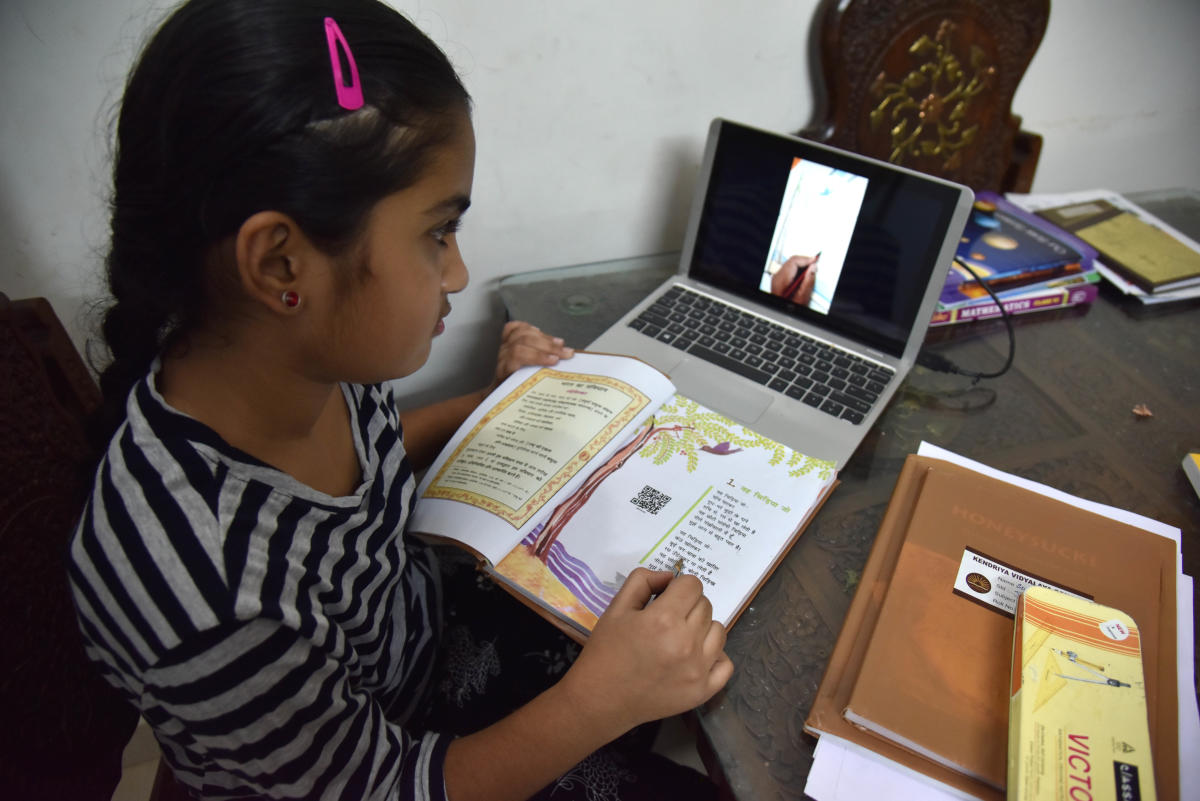(Authored by Dr.Rajalakshmi Vel, Assistant Professor, School of Management, Vel Tech Rangarajan Dr.Sagunthala R & D Institute of Science and Technology, Chennai)
Learning in the new reality:
The outbreak of the pandemic has brought a total shift in the teaching-learning process. While the lockdown has steered learning towards online, there are many indicators that it can last beyond the COVID period. Universities abroad have opened up their online programs for free access. Publishing houses are getting innovative by offering e-learning content and practice tests for students.
There is a convergence of physical and digital worlds that were perceived as ‘competing’ mediums. Technology Information Forecasting and Assessment Council (TIFAC), a think tank on India’s Technology in its ‘Vision 2035’ document reflects on the merger of the physical and cyber world as one of the main drivers in the educational landscape. The sector is poised for a tectonic shift which will redefine learning.
Towards a hybrid model:
From the immemorial Guru-Shishya interface to today’s hybrid model, education has gone through a metamorphosis. By and large, on-campus educational programs across higher education institutions are designed as variants of the classroom cum industry model. The industry component facilitates acquiring of hands-on skills for learners through internships and live projects. The in-class experience is enriched by adopting innovative pedagogy in the form of flipped classrooms and simulation exercises.
The growing online courses and virtual education were considered as threats to the brick and mortar system. However, given the flexibility and variety of online courses, educational institutions started to embrace online learning making them friends of classroom learning. Online courses in the form of ‘add-ons’ or ‘value-added-courses' worked well as supplements to mainstream learning.

This approach to learning is challenged due to the Coronavirus pandemic. Educational Institutions across the nation have resorted to remote teaching to ensure continuity of academics. The teaching model is undergoing experimentation. If the time has arrived to integrate online learning with face-to-face learning, then how much of classroom learning can be substituted by virtual learning? Without distorting quality, how best can programs be designed to unlock the potential of virtual teaching? The current experiment of remote teaching can guide us in answering this. Online learning has been a debatable topic, but relatively little has been written about the design and learning principles for online courses. Let’s explore the vital aspects of online learning with the beginner’s mind.
The Instructor’s Desk:
One of the main differentiators between Face to Face and Online teaching is that the instructor remains connected to the mind of the learner while remaining disconnected from the learner’s personal context. Instructors aid as facilitators to fill important knowledge gaps. This puts course design and evaluation at the core of online teaching. Course instructors must carefully chart out ‘what to teach’ for every course in order to make lessons stick. Designing a teaching tool-kit for every course will help teachers refine their teaching for online courses. A ready to reckon checklist for instructors may encompass the following:
- Pre-class content in the form of the core material has to be first-hand made available for learners. The core material is that part of the content that the students should know and learn.
- The course needs to be broken into short modules and further into micro topics for better learning.
- Learning instructions has to be provided to guide how a student should learn.
- Additionally, course calendars, a list of readings, web-based resources is a must include.
- As the method of ‘Say it: Show it: Link it’ to an activity enables better retention of learning, online student activities for engaging and grading needs be chalked out.
The Learner’s Desk:
Online learning is a lot more challenging than classroom learning. The onus of learning lies fully on the learner, unlike classroom learning where students are under the direct supervision of the teacher. The distraction quotient is high in the online medium as students tend to multi-task. Low attention span correlated with low retention levels become counterproductive for online learning. Additionally, the absence of a peer group can deter the spirit to learn. A self–assessment of one’s motivation levels will help to avoid unrealistic views about online learning.
A strong commitment to learn and work by oneself is a necessary attitude for online learners. As most online courses are not taught in real-time, effective time management becomes crucial as students are likely to procrastinate learning. Another critical component to consider is the digital competence of learners. Beyond basic computer skills, being conversant in the use of technology is an added advantage. Furthermore, the learner may take simple steps in creating a good study environment and evaluate the ergonomics. By and all, anytime anywhere learning provides students a chance to take greater responsibility for their learning and to be engaged in learning activities and opportunities that meet their own individual needs. Discovering the art of learning online is of paramount importance for every learner.
The Model Curriculum:
A good approach to hybrid learning requires determining the Online-Offline course mix. To begin with the basic-level courses of every curriculum can be offered through online mediums. Institutions can identify courses with less personalization to be offered online. Typically ‘Introduction to X’ topics, ‘Basics or Fundamentals of Y’ topics are suitable for the online catalogue for all programs.

Institutions can also experiment blended courses with both online and face-to-face instructions. Once a strong foundation of online courses is created by institutions the next level would be to offer learners the mobility between programmes and levels of studies. This implies offering choices in how, what, and when to learn, a complete breakthrough in learning with the freedom to leaners. While the trials are conducted, it is important to have a check on the students’ learning outcomes. The new learning model should be continuously monitored for its effectiveness and improvisation.
Digital Tools for Learning:
With the surge in online teaching, there will be a demand for digital tools to enable and enhance the process of teaching-learning. Innovative tools that allow instructors to monitor, communicate, and engage with students, electronic evidence management, analysis systems will continue to be developed. New devices for generating annotated evidence and analysis of what and how students learn will offer an opportunity for instructors to plan, guide, and co-construct student learning.
Amid lockdown, online courses and webinars have emerged as the new normal for education. Therefore it’s worthwhile to take a fresh look at how people learn as we start to depart from the time-tested classroom experience. In all ways, the education industry was ripe for disruption. COVID – 19 may just be the disruptor.









Comments